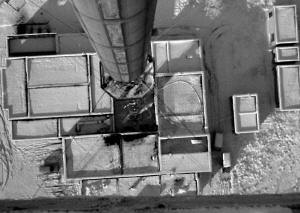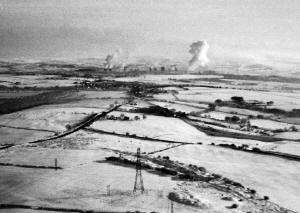|
BBCeng.info
Recollections of BBC engineering from 1922 to 1997 |
The British Broadcasting Corporation web site is: www.bbc.co.uk |
Transmitter Projects - Reminiscences
Pontop Pike antenna system
By Tony Smith
This set of pictures (click to enlarge) results from an inclination someone had to re-cable the feeders inside the Marconi Antenna perched on top of the Pontop Pike mast.
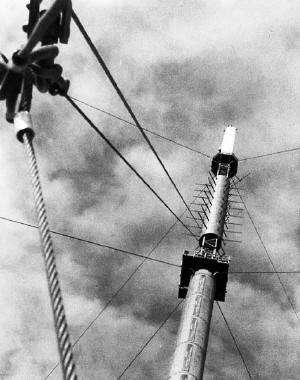
Taken on route up the mast to our landing spot between the Cylinders.
As the bulk of the work was going to take place at night after the UHF had
been switched off (yes they used to switch off around midnight back then and
people went off to their beds) we used to get as much equipment stored up on
the structure as possible during the day.
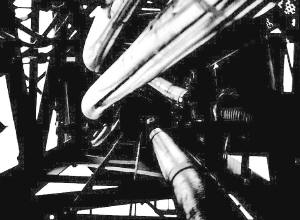
The problem with having to land the cage between the cylinders was that you
then had to squeeze up through the feeders and through the next cylinder to
reach the UHF antenna.

Here a young T.C.P.D engineer Ken Vickers and a not so young T.C.P.D
engineer Vernon Moyers are bringing up engineer type things in a bag.
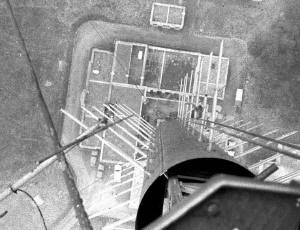
This is looking down from the UHF level platform showing that it was a no-go
area for landing cages.
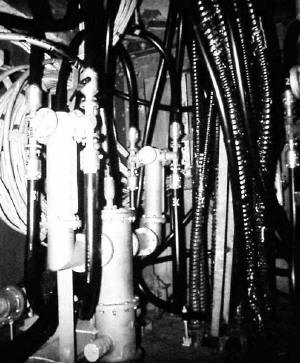
This is the view you get once you open up the door into the base of the
Marconi UHF antenna and I remember asking "are you sure you want to change
this lot?"
Once the night work started we fixed a very large gas driven flood light
onto the side of the cage. This was A: to help the winch driver see where we
were, as crashing into the side of a mast at speed does nothing for the
nerves, and B: to light up the lower cylinder to make climbing through a bit
easier.
This flood light created a bit of a stir later on because several people in
the Newcastle area reported seeing a UFO around Concert Steelworks. This led
to the cage coming down one dawn morning to find a couple of Police cars and
officers laughing their heads off. Mind you once they saw the state we were
in wrapped up in rigging gear they went off convinced that there were aliens
about.

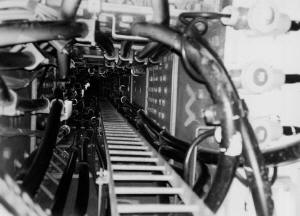
These were taken during the work inside the UHF antenna and it was all very
tight. Also Mr Marconi had designed lots of bolts and studs to catch on your
clothing as you adopted the toe and heel technique up the ladders.
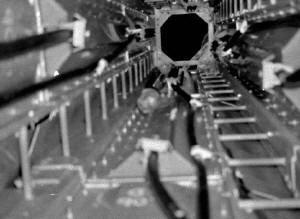
This picture shows the top hatch of the antenna open to the sky to let some
air circulate through. It was also just below this point that the inside
spine and panels are kept vertical inside the outer fibre glass by four
hydraulic struts. These struts in fact allowed the whole internal antenna to
move around a fair bit inside the outer casing which helped when we had to
rig a rope ladder down between the panels and the outer case to make some
adjustments.

This is T.C.P.D. technician Bill Bishop working down the panels on a rope
ladder between the outer fibre glass case and the antenna.
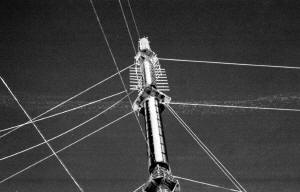
Being where Pontop Pike is, it is subject to some rapid weather changes and
these pictures show a day when we were suddenly caught out by a heavy
blizzard.

